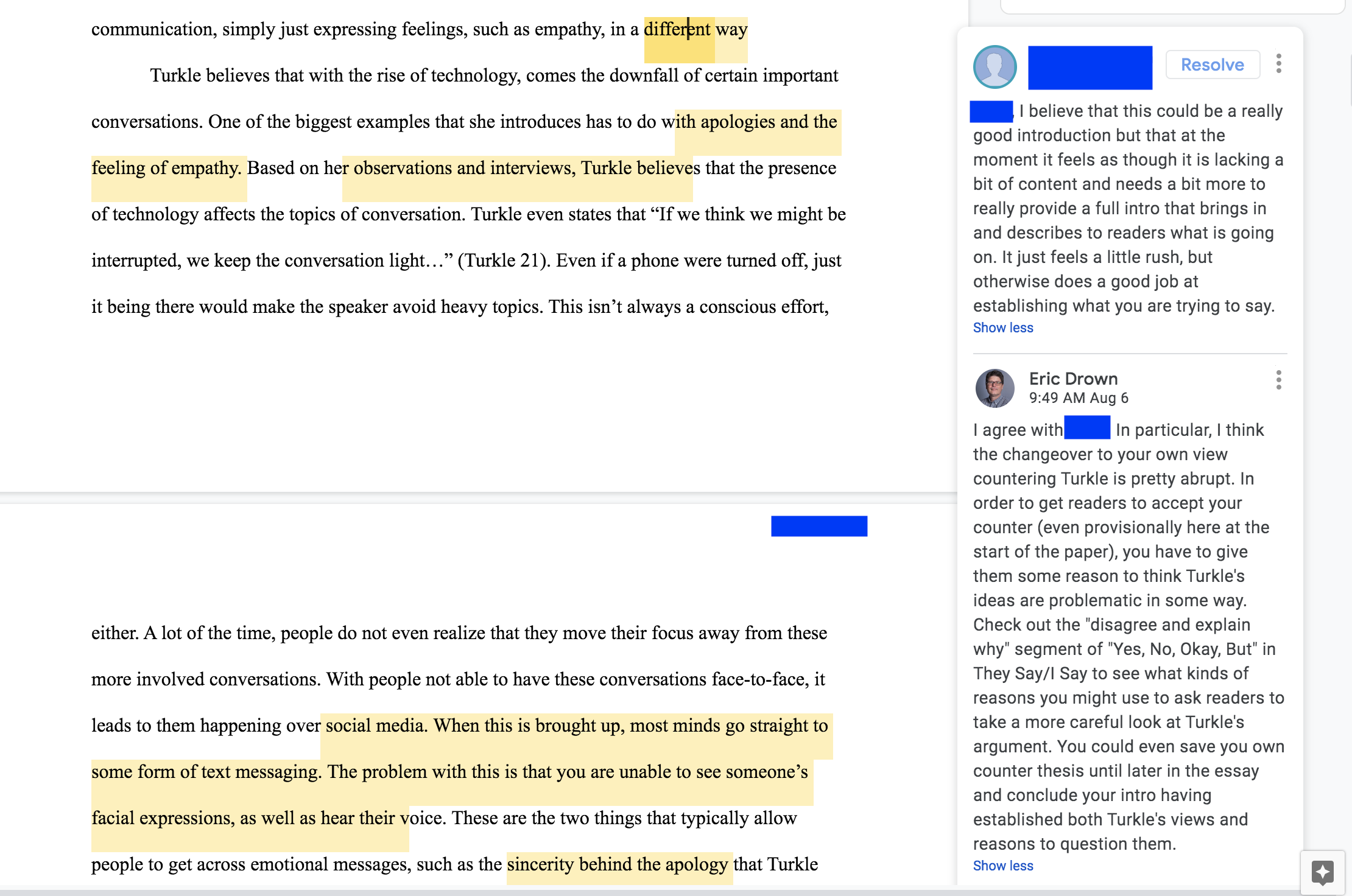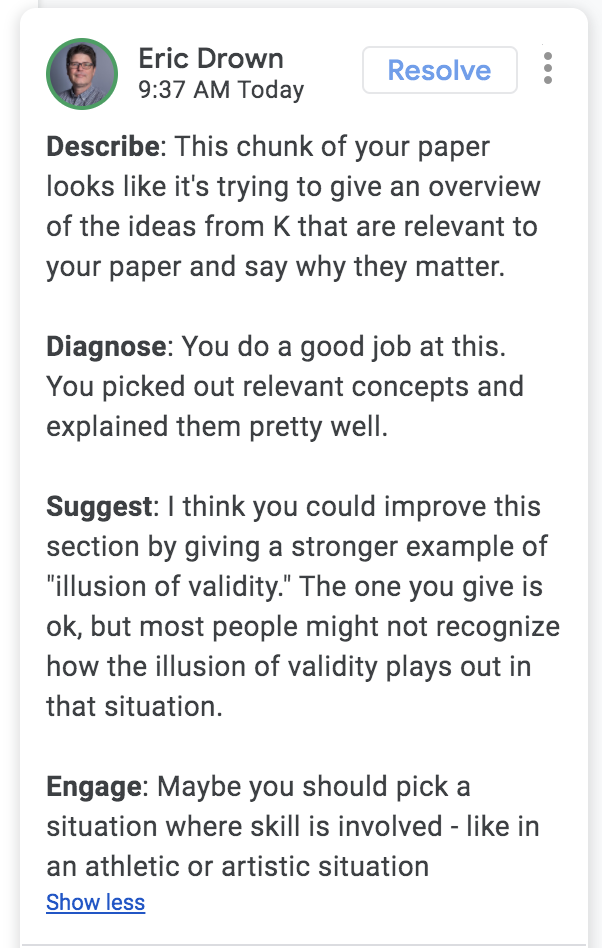An essay is a meaning-making piece of writing in which a writer seeks to make sense of the world by exploring some particular problem or phenomenon, often through the lens of some particular idea. The essayist tries to make connections among ideas and experiences to create knowledge.
As you read your peer’s drafts, write margin comments and an end comment to help the writer improve the global dimensions of their writing.
You can also use this procedure to assess your own writing and make revision plans.
Margin Comments
A good margin comment will:
- Be generous and considerate in tone;
- Describe what you see or think as a reader – especially describe the purpose of each chunk of the paper you evaluate, leading to a diagnosis of a problem or description of an improvement to be made; I tend to evaluate how well the chunk fulfills its purpose with simple intuitive terms such as excellent, good, ok, not-too-well;
- Suggest a specific strategy for improvement;
- Engage the writer’s ideas by asking leading questions, providing further detail, suggesting specific materials for inclusion, or playing the believing game or the doubting game with the writer.
- Indicate whether this is a high-, medium-, or low-priority issue.
At first, you might want to label each part of your comment:
Experienced reviewers tend to pay attention first to the global dimensions of a peer’s writing. They:
- analyze drafts for idea development, claims, evidence and organization;
- identify solid elements of a draft as well as targeted opportunities for revision;
- consider organization from a reader’s point-of-view;
- go beyond merely identifying problems and offer concrete, specific suggestions for revision;
- participate fully in peer review markup and group discussion of drafts;
- embrace revision as an opportunity to transform a project.
Some markers of solid critique of one’s own and others’ work include:
- Comments on drafts that address idea development, claims and evidence, and organization
- Comments on drafts that offer specific suggestions for change, not merely a critique of weak spots.
- Discussion of a peer’s ideas include exploration of the ideas in the project, suggestions regarding implications, possible opportunities for extension, and even counterarguments.
This is what a good comment looks like:

Aim for no more than two or three comments per page.
End Comments
In an end comment, write some sentences that give the writer an idea of your overall impression or general effect of the paper. If you can, explain the central insight you have gotten from the paper as a careful reader. Make suggestions about what improvements the writer should prioritize as s/he continues to develop his or her paper’s argument in global revision.
![SASC - Student Academic Success Center - UNE [logo]](https://s3.amazonaws.com/files.uneportfolio.org/wp-content/uploads/sites/5/2022/02/SASCLogoSquare_Smaller-3-e1644936452801.jpeg)
